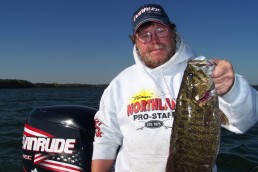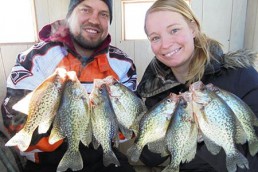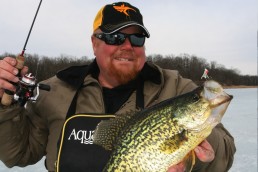Crappie Facts to Help You Catch More Fish
SHARE THIS POST
The Crappie
Crappies are one of the most sought-after fish species in the United States. Common in lakes, ponds, rivers and streams, two similar but different species of crappies—black crappie and white crappies—generate excitement among anglers. They are hard-fighting adversary on a fishing pole and are excellent table fare as well. Here are some crappie facts to help you catch more fish.
Crappies are the largest member of the sunfish family. They are native to or have been introduced to every state in the nation except Alaska and Hawaii.
Black and white crappies are fish of many names—strawberry bass, calico bass, Oswego bass, speckled bass, specks, speckled perch, Sac-a-lait and papermouths.
The world record for the largest black crappie was 5.46 pounds and was caught in Tennessee. The world record for the largest white crappie was 5.3 pounds, caught in Mississippi.
In May of 2006, a 19-inch, 5.02-pound state record black crappie was caught in Missouri and relocated to the Bass Pro Shop aquarium in Springfield. Thousands of people would view the giant crappie in its new home.
Identifiers
White crappies are longer than black crappies. Black crappies tend to be wider and heavier than white crappies of the same length. The average length for a crappie is 10.8 inches. The record for the longest crappie was a 19.3-inch black crappie.
Crappies have an average maximum life span of 7 years. The oldest recorded age was a black crappie that was 15 years old.
Crappies have two rows of numerous small, conical teeth, which are called cardiform, due to their resemblance to a wool carding tool.
The best way to distinguish the species is to look at their fins. Anal fins of white crappies will always have 6 pointy spines, while black crappies have no spines on their anal fins. Black crappies have 7 to 8 pointy spines on their dorsal fins, while white crappies have 6 pointy spines on their dorsal fins.
White crappies can live in slow-moving rivers and streams and prefer shallow water as their habitat. Black crappies prefer the deeper, clean water of lakes and ponds which have abundant aquatic vegetation.
Crappies are schooling fish. Both species will form and travel in large groups as they forage for food.
Are you enjoying this post?
You can be among the first to get the latest info on where to go, what to use and how to use it!
The Facts
Morning and evening are prime feeding times for crappies. Crappies will also feed in the darkness, and midnight to 2 a.m. is a prime feeding time.
Adult crappies’ favorite forage is small minnows and juvenile fish, although they frequently eat other food items. Black crappies eat more insects and crustaceans than white crappies. Black crappies will readily forage for insects that are on the surface of the water.
The favorite dining area for crappies is around submerged brush and aquatic vegetation where minnows and small fish try to hide. Crappies also eat their predators when these predatory fish are small juveniles. Among those predators are walleye, northern pike, muskellunge and bass.
The eye size of a crappie is the largest among similar-body-sized freshwater fish. Crappies’ eyes have an upward and forward position above their nose. Because of this, crappies hunt for prey that is in front and above their body.
The Spawn
Black crappies usually are triggered to spawn when water temperature reaches 60 to 64 degrees. White crappies usually are triggered to spawn when water temperature reaches 65 to 70 degrees.
Male crappies build a spawning nest for the female, fanning with their fins and body to carve out a bowl-shaped depression on the bottom, usually in water 2 to 5 feet deep. Black female crappies can lay up to 140,000 eggs within the nest. White female crappies can lay up to 200,000 eggs.
After egg laying is finished, the female leaves the nest, and the male crappie aggressively guards the nest. Crappie eggs usually hatch within 5 days, and the juvenile crappie will initially feed on tiny zooplankton.
Favorite lure colors for attracting and catching crappies are directly linked to water clarity and depth. In clear, deep water, the most productive colors are blue/white and purple/white. In shallow, stained water, the most productive colors are brighter shades like chartreuse, green, lime and orange.
Become a MidWest Outdoors Insider here!
MWO
SHARE THIS POST
Did you enjoy this post?
You can be among the first to get the latest info on where to go, what to use and how to use it!
John Murray
John Murray has a passion for the outdoors. A former professional fly tyer and fishing shop owner for more than a decade, John is a member of the NYS Outdoor Writers Association and is determined to share an acquired lifetime of knowledge to help everyone become proficient hunters and anglers.



